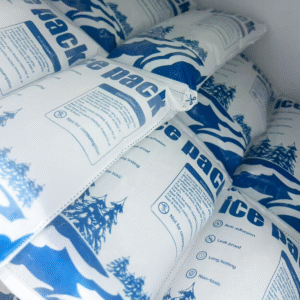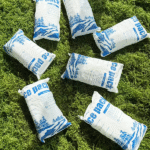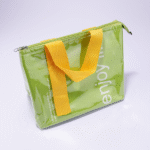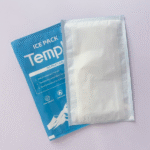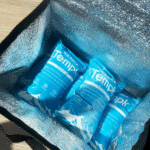Cómo empacar un refrigerador con hielo seco: La guía definitiva para 2025
Empacar un refrigerador con hielo seco es una de las mejores maneras de mantener temperaturas ultra bajas durante el transporte. Si se dirige a un viaje por carretera, Productos sensibles a la temperatura de envío, o simplemente preservar la comida congelada, Esta guía completa proporciona instrucciones paso a paso para garantizar el uso seguro y efectivo del hielo seco. Aprende a colocar en capas, manejar, y almacene hielo seco correctamente para maximizar sus beneficios. También cubriremos las últimas tendencias en el uso de hielo seco para 2025 para mantenerte por delante de la curva.
-
¿Cuáles son los mejores materiales para usar al empacar un refrigerador??
-
¿Cuánto tiempo durará el hielo seco en un refrigerador??
-
Más consejos para garantizar que su refrigerador permanezca frío por más tiempo.
¿Cómo se empacan un refrigerador con hielo seco??
Empacar un refrigerador con hielo seco requiere una planificación cuidadosa para maximizar su eficiencia al tiempo que garantiza la seguridad.. La clave es capas. Comience con hielo seco en la parte inferior, seguido de artículos perecederos como comida o medicina, asegurando que no toquen el hielo seco directamente. Vamos a sumergirnos en el proceso.
¿Qué hace que el hielo seco sea el material de embalaje más fresco ideal??
El hielo seco es dióxido de carbono sólido (CO2) y tiene una temperatura significativamente menor que el hielo normal. A -109.3 ° F (-78.5°C), Es perfecto para mantener los artículos congelados por largos períodos, Incluso cuando estás en viajes extendidos. A diferencia del hielo normal, El hielo seco se sublima directamente en gas sin dejar atrás ningún residuo de agua. Esto lo hace ideal para situaciones en las que necesita mantener las temperaturas de los cerosas..
Consejos clave para empacar un refrigerador con hielo seco:
-
Las capas son cruciales: Comience colocando una capa de hielo seco en la parte inferior del enfriador para crear una base fría para sus artículos.
-
Envolver hielo seco: Para evitar el contacto directo con los alimentos, envolver hielo seco en tela o periódico. Esto también ayuda a reducir la sublimación y extiende su tiempo de enfriamiento.
-
La ventilación es clave: Siempre deje el refrigerador ligeramente abierto para dejar que el gas de CO2 escape. El sellado de hielo seco en un recipiente hermético es peligroso y puede causar acumulación de presión.
Cómo colocar los elementos en el refrigerador
El orden en el que empaca el enfriador es importante para maximizar la retención de frío y mantener todo seguro:
-
Primera capa: Comience con hielo seco en el fondo, Asegurar que esté correctamente envuelto para evitar el contacto directo con los alimentos..
-
Segunda capa: Agregue artículos congelados como carne, helado, o productos farmacéuticos.
-
Capa final: Coloque bebidas y otros artículos no congelados en la parte superior, Asegurar que use paquetes regulares de hielo o gel para mantenerlos frescos pero no congelados.
Los mejores materiales para usar al empacar hielo seco en un enfriador
El hielo seco es el material más efectivo para mantener los artículos congelados, Pero el aislamiento de su refrigerador juega un papel igualmente importante. Esto es lo que debes considerar:
-
Enfriadores de espuma de poliestireno: Ideal para viajes cortos. Proporcionan un aislamiento decente, Mantener el hielo seco efectivo durante varias horas.
-
Refrigeradores de lados duros con aislamiento grueso: Perfecto para viajes más largos. Estos enfriadores tienen paredes más gruesas que ayudan a extender el tiempo de enfriamiento..
-
Mantas de hielo secas: Estas envolturas están diseñadas para frenar el proceso de sublimación mientras proporcionan un aislamiento adicional para el hielo seco.
¿Cuánto tiempo durará el hielo seco en un refrigerador??
La longevidad del hielo seco en un enfriador depende de varios factores como el tipo más frío, temperatura ambiente, y la cantidad de hielo seco usado. Aquí hay una guía general:
| Tipo más fresco | Duración de hielo seco | Caso de uso ideal | Consejo práctico |
|---|---|---|---|
| Enfriadores de espuma de poliestireno | 18-24 horas | Viajes cortos o pequeñas cantidades | Mejor para 1-2 días |
| Refrigeradores aislados de lados duros | 2-3 días | Viajes largos o envíos más grandes | Usar con múltiples capas de aislamiento |
| Grande, Enfriadores de alta calidad | 3-5 días | Transporte extendido o almacenamiento largo | Combinar con paquetes de gel para enfriamiento adicional |
Cómo manejar el hielo seco de forma segura en un refrigerador
Manejo de hielo seco requiere precaución debido a su frío extremo. Aquí hay consejos de seguridad esenciales:
-
Usar guantes protectores: Use siempre guantes o pinzas aisladas cuando se maneje hielo seco para evitar la congelación.
-
Asegurar la ventilación adecuada: Asegúrese de que el refrigerador no esté completamente sellado. Permita que el gas de CO2 escape dejando la tapa ligeramente ajar o el tapón de drenaje abierto.
-
Evite el contacto directo con los alimentos: Envuelva el hielo seco en una capa protectora para evitar que toque los alimentos directamente.
¿Puedes usar hielo seco con hielo regular??
Sí, El hielo seco y el hielo normal se pueden usar juntos en el mismo refrigerador. Sin embargo, Asegúrate de separarlos. El hielo seco mantiene los artículos congelados, mientras que el hielo regular los mantiene fríos pero no congelados. Para usar ambos:
-
Capa inferior: Coloque el hielo seco en la parte inferior para mantener los artículos congelados sólidos.
-
Capa superior: Use hielo regular para mantener bebidas y alimentos no congelados en frío.
Para la punta: Siempre pruebe la configuración de su refrigerador antes de viajar para asegurarse de que el hielo seco dure tanto como sea necesario.
2025 Tendencias en el uso de hielo seco para embalsar enfriadores
¿Qué hay de nuevo en el hielo seco y la tecnología más fría??
A medida que avanzamos hacia 2025, Los fabricantes más fríos están desarrollando modelos más eficientes diseñados para funcionar en conjunto con hielo seco. Estos enfriadores están equipados con materiales avanzados de aislamiento, Permitir que el hielo seco dure más. Además, refrigeradores inteligentes con los sensores de temperatura incorporados están ganando popularidad, ofreciendo monitoreo en tiempo real para garantizar que sus artículos permanezcan a la temperatura correcta.
¿Cuáles son los impactos ambientales??
hielo seco, como cualquier otro material, tiene consideraciones ambientales. Sin embargo, A medida que la ecosconsciencia crece, Hay un interés creciente en alternativas de hielo seco sostenible y mejores soluciones de envasado.. Tendencias clave a tener en cuenta en 2025 incluir:
-
Enfriadores sostenibles: Se están diseñando específicamente para nuevos enfriadores ecológicos hechos de materiales reciclables específicamente para el almacenamiento de hielo seco.
-
Refrigeradores inteligentes con sensores: Estos enfriadores cuentan con sensores de temperatura para permitir el monitoreo remoto de condiciones internas.
-
Alternativas de hielo seco: Las empresas están experimentando con refrigerantes biodegradables que pueden reemplazar el hielo seco en algunas aplicaciones.
Preguntas frecuentes
q: ¿Cuánto hielo seco necesito para mi refrigerador??
A: Use alrededor de 10-12 libras de hielo seco por día para cada refrigerador de tamaño estándar. Ajuste de acuerdo con la duración del viaje y el tamaño más frío.
q: ¿Puedo usar hielo seco con hielo normal??
A: Sí, puede! Coloque el hielo seco en la parte inferior y el hielo regular en la parte superior. Esta combinación mantiene los artículos fríos y congelados simultáneamente.
q: ¿Puedo usar hielo seco para enviar productos perecederos??
A: Absolutamente. El hielo seco se usa ampliamente en artículos de envío sensibles a la temperatura como alimentos y productos farmacéuticos. Asegúrese de que el enfriador esté ventilado y se sigan todos los protocolos de seguridad.
Resumen y recomendaciones
Control de llave:
Empacar un refrigerador con hielo seco es una forma efectiva de mantener sus artículos congelados durante períodos prolongados. Colocando el hielo seco correctamente, Garantizar la ventilación adecuada, y usando los materiales de enfriamiento correctos, puedes mantener la cadena fría de manera efectiva. Siempre manejar el hielo seco con cuidado, y asegúrese de que su refrigerador no esté sellado fuertemente para evitar la acumulación de presión.
Pasos de acción:
-
Elija un refrigerador bien ventilado: Asegúrese de que esté aislado para mantener el hielo seco por más tiempo.
-
Envuelva el hielo seco con cuidado: Evite el contacto directo con los alimentos utilizando capas protectoras.
-
Monitorear la sublimación: Realice cuánto tiempo dura su hielo seco y reponga si es necesario.
Acerca de Tempk
TEMPK se especializa en proporcionar productos de hielo seco de alta calidad para diversas aplicaciones, incluyendo preservación de alimentos y envío sensible a la temperatura. Nuestras soluciones aseguran que sus productos se mantengan frescos y seguros durante el transporte.. Contáctenos hoy para obtener más información sobre nuestros servicios expertos.






